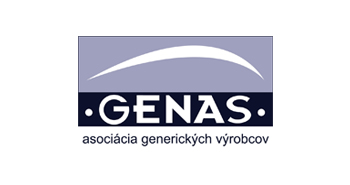Developing new drugs is now taking much longer
Pridané: 23. 10. 2009
Such an approach is now a part of history and modern scientific medicine and pharmacy ascribes the effectiveness of remedies to the chemical substances they contain. Pharmaceuticals is a sophisticated industry with hundreds of companies, thousands of employees and billions of euros invested in research, development and production.
“The main driving force in innovative pharmaceutical research is an effort to move forward and to overcome limits in our abilities to cure patients,” Miroslav Lednár, the chairman of the Board of Directors of the Slovak Association of Research-Based Pharmaceutical Companies (SAFS) told The Slovak Spectator. “The innovative pharmaceutical industry and the development of modern drugs and vaccines have contributed to a change in the lives of millions of people.”
Research and development (R&D) for an original drug takes 10 to 15 years on average and costs about €1 billion.
“Compared with the past, this whole process – from the start of research up to the launch of an original drug on the market – has significantly lengthened,” Lednár said. “To launch a new original drug on the market in 1960 lasted six years on average. During the last 50 years or so this period has been extended by an additional six years. This is because of more stringent requirements for documenting the effectiveness and safety of drugs.”
Today, the development of a new drug starts with basic molecular research, with 5,000 to 10,000 molecules being explored as potential constituents of a medicinal drug, followed by patent protection procedures and pre-clinical study, i.e. laboratory tests and animal testing. The three phases of clinical studies that then follow are the most demanding financially. If the pre-market medication is tested successfully, the drug is registered. After the new drug is launched, it is evaluated and monitored in a fourth phase. Data about its usage are collected in this phase, enabling detection of possible deleterious effects not uncovered during clinical trials, Lednár explained.
The stricter requirements for testing coupled with the longer time periods required for the launch of a new medication increases the cost of the whole process.
“It is necessary to say that 98 percent of the investment into research and development comes from the private sector, from pharmaceutical and bio-technology companies, and the remaining 2 percent comes from the government and academic sector,” said Lednár.
The biggest challenge of the whole R&D process is its high risk of failure. History provides examples in which undesirable characteristics were uncovered only after a drug was used in medical practice. Since its potential risks outweighed its benefits, in the end the drug had to be withdrawn from the market after a large investment was made.
“Only 3 out of 10 drugs have a return on the funds invested into their development,” said Lednár. “Therefore, these three drugs must earn enough money so that the pharmaceutical company can begin the process of new research with 10,000 molecules, one of which could be the potential base for a new drug.”
Patent protection
The pharmaceutical sector is one of the principal users of the global patent system and protection of intellectual property rights is of fundamental importance to it. This is because of the necessity to address current and emerging medical problems and the long lifecycle of products and their long development periods.
“The exclusivity periods granted through patent law and other mechanisms provide incentives to the originating companies to continue innovating,” said the Executive Summary of the Pharmaceutical Sector Inquiry Report, published in July 2009.
Original pharmaceutical products are protected by a general 20-year patent umbrella, as is the case for all other inventions. The primary, potentially effective molecule can be granted patent protection even if it is not yet clear whether it can be used for practical treatment at some time in the future.
“When the R&D process swallows up 10 to 12 years, or sometimes even 15 years, then on average a pharmaceutical company has only 8 to 10 years to earn back its investment into a new original drug,” said Lednár, adding that other industrial branches, in which research and development of new products is not so time-consuming can enjoy exclusivity for 18 years and more.
After the patent expires, manufacturers of generic products can enter the market with medications that are equivalent to the original drug.
“An optimal solution would be if a generic producer can bring the new generic drug on the market one day after the patent of the original producer lapses,” Michaela Palágyi, vice chairwoman of GENAS, the association of generic drug producers in Slovakia told The Slovak Spectator. “But preparing the production process, as well as other administrative procedures, prolongs the period for the entry of a generic onto the market by six months on average.”
The prices of generic drugs are typically much lower than those of the original formulation since generic producers are not investing in research and development of new drugs. Using generic drugs helps to maintain public health budgets and benefits consumers with lower prices.
In Slovakia for the third quarter of 2008, 77 percent of the volume of packaged medications sold was generics and 23 percent was original, patented medicines, according to data from IMS Health, an international consulting and data service company for the pharmaceutical industry.
“When calculated according to the number of packages of generic drugs purchased, Slovakia belongs among the countries in the EU with the highest generic consumption,” said Lednár. “This is historical also, since up to the 1990s medical treatment was, in general, set to the benefit of generics with the exception of few licensed pharmaceuticals. Only after the fall of the communist regime in 1989 did producers of original drugs start entering the Slovak market.”
Starting with this issue, The Slovak Spectator will bring readers more information about the pharmaceutical sector and health care via the PharmaColumn.
Zdroj: http://www.spectator.sk/articles/view/36780/24/developing_new_drugs_is_now_taking_much_longer.html